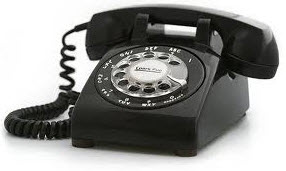Mary Kinn once came to a seminar of mine called "So You Want To Be An Author."
Let me repeat.
Mary Kinn came to a seminar I once gave called "So You Want To Be An
Author." Mary Kinn.
THE Mary Kinn.
The Mary Kinn of
Kinn's The Medical Assistant, now in its eleventh edition, the one that's been around since 1956, the year Elvis first hit the charts and gas cost 22 cents a gallon.
That Mary Kinn.
It was at the 2006 AAMA annual conference in Milwaukee, and it was my first seminar for them. I really wanted to wow the attendees, but I also hoped that out of the seminar a potential author might evolve. I was signing heavily at the time and looking for budding authors everywhere.
I droned on about royalties, contracts, the publishing process, and how difficult authoring was but also how deeply fulfilling. Not like saving a life but still, pretty great. And that's how I ended that day, on the worth and promise of authoring a book.
A tallish woman approached me afterward to, I thought, ask a question or perhaps tell me about a book she wished to write. I put on my best salesman face.
That's what we publisher-types do, after all, we sell. We sell ourselves and our abilities. We sell would-be authors on the services we can provide. We sell the potential for great sales down the road and the payoff all authors seek but not enough find.
But the woman didn't ask a question or talk about a book. Instead she stopped near me and sort of stepped to one side, opening the path for someone behind her. A tiny, aged, wisp of a woman appeared in my gaze. Her fine, completely gray hair was coiffed into a bun atop her head, a perfect fit for her aging frame.
The color of her eyes I cannot recall, I just remember the sparkle in them and the kind, gentle face that surrounded them.
"This is Mary Kinn," the woman to the side said. I looked at her and said, "The Mary Kinn?"
"Yes."
I was stunned. "Oh, my God," I sputtered, turning back to Ms. Kinn, "it's such an honor to meet you."
I reached for her hand, careful to grasp, not grab--my usual, clumsy practice. Her hand was a rose, most of its petals long since fallen off but still having a few ruby fronds remaining. It was a careful hand, weathered but soft, the hand of a truly admirable woman who has earned every wrinkle.
The feeling stays with me to this day.
"I enjoyed your seminar," she said, her voice sweet and light.
"Thank you," I said, "but why on earth would you come to a session on being an
author?"
"Oh," she said,"I just like to keep up with what's going on."
I gushed a bit more about how much I respected her, my words fumbling from my mouth like a quarterback with no thumbs.
Our time together soon ended, and she and her friend turned and walked away. I felt as if I had just met a durable Hollywood star. Susan St. James, perhaps.
What Ms. Kinn was like to work with I have no idea, nor do I care. Her book is now being ably authored by Patricia Young-Adams and Deborah Proctor and is still selling well. No matter.
Mary Kinn is an icon in the medical assisting world, and in the health care educational publishing world where I spend much of my time, and for that moment she was my idol.
She still is, actually.
That's what being an author can mean and a plateau I wish every author could reach.
Thank you for that moment, Mary. I'll cherish it always.






























